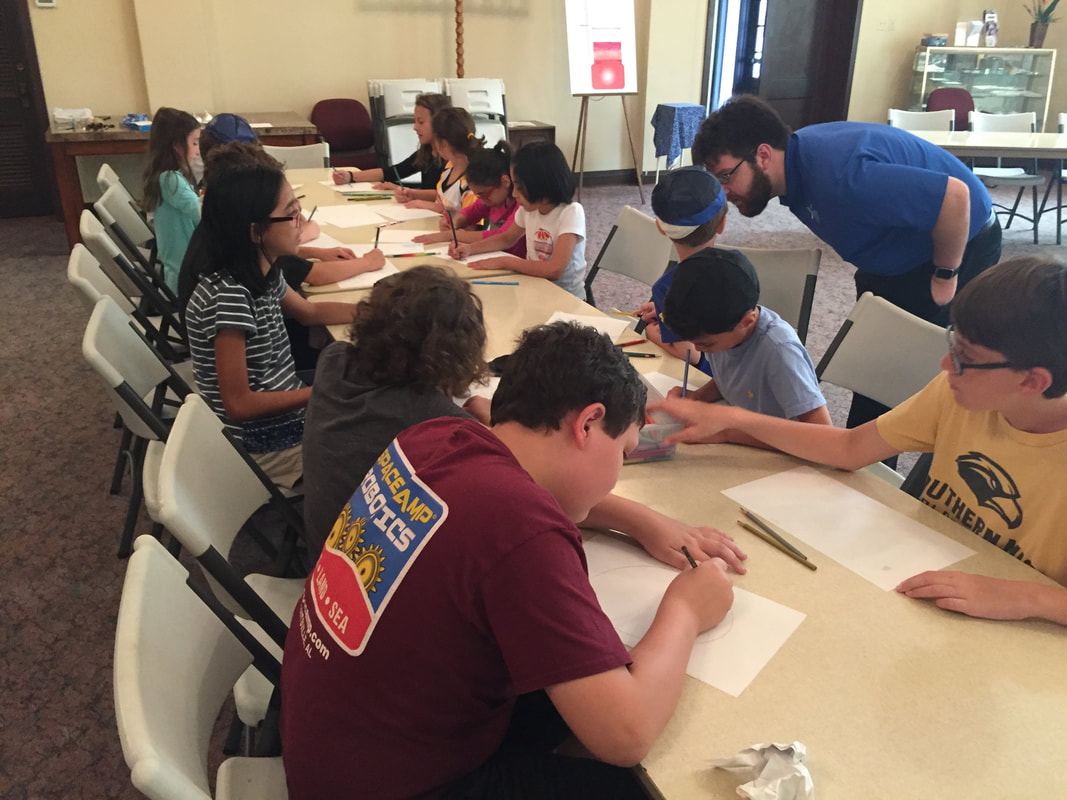Return to Education Newsletter main page! |
Classroom Management & The ISJL CurriculumBy Leah Wittenberg, Lawrence Magdovitz ISJL Education Fellow
Although it may not seem like it at first glance, the ISJL curriculum is chock-full of classroom management techniques. You may have to search to find some of the hidden methods, while others are more conspicuous, but all are built-in help for ISJL partner teachers. One way to set your classroom up for success is to have a set structure each week. This technique is especially and specifically helpful for younger students. For example, in the recently revised kindergarten and first grade curricula, each lesson begins with Circle Time, and then transitions to Teaching Time. In kindergarten, there is a weekly greeting, and in first grade, there is a Motion of the Week. Then, there is always Snack Time, Game Time, Craft Time (titled Make & Take in kindergarten). Writing this schedule on the board with the timeframe is useful as well, even if students may not be able to read yet. The lessons in our revised second grade curriculum also have a familiar structure for students. Each week there is a shi-ur (lesson) where students learn about a topic, an activity called z’man chaveir (buddy time) where students participate in an activity with their buddy, assigned earlier in the semester! Together they do omanut (art) and mis’chakim (games). Each lesson is structured in a way that is both recognizable for the students, and engaging since each activity covers different learning modalities—as do all activities in ISJL lesson plans! Allowing students to take ownership in the classroom by teaching the rest of the class is a great way to engage students, which is a key aspect of classroom management. Each lesson in the second grade curriculum begins with an aseifah, (gathering/meeting) before the Set Induction, where each week students take turns being the morah/moreh (teacher) of the week. The morah/moreh is in charge of welcoming everyone to class, taking attendance, collecting tz’dakah (righteous giving), and leading the class in stretching or warm up movements. The morah/moreh also asks the class review questions about what they learned the week before. One of the most important facets of this student “teacher” is that the position is not assigned based on behavior or attendance. This unique assignment is delegated to all students at some point throughout the year to work on Hebrew skills, confidence, and presentation. More overt techniques such as the “Supplies,” “Other Things to Prepare,” and “Additional Notes” sections are also crucial since being prepared before class is half of the classroom management battle. Not only is everything you need to print, copy, and cut identified, the amounts, colors, and sizes of supplies are all specified, so teachers can feel confident knowing they are prepared fully for class. After all, when you aren’t scrambling beforehand trying to figure out what you need for the lesson, you can focus all of your energy on making sure students are completely engaged. At times we teach about sensitive subjects such as death, antisemitism, and the holocaust. Any time there is a topic covered in a lesson that may be difficult for students to digest, there is a message in the “Additional Notes” section about how to best handle the situation. In all of our lessons, we aim to include activities that are exciting and relevant to students. This variety of programming is one of the hidden classroom management techniques contained in the ISJL curriculum. The next time you’re preparing for religious school and you find a hidden or overt classroom management technique in a lesson, share it with other ISJL education partners in our Facebook group! |
- Home
- WHO WE ARE
-
WHAT WE DO
- PODCAST
- Conference >
- Education >
-
CULTURE
>
- Culture Overview
- Cultural Programming >
-
History
>
-
Encyclopedia of Southern Jewish Communities
>
- Alabama Encyclopedia
- Arkansas Encyclopedia
- Georgia Encyclopedia
- Florida Encyclopedia
- Kentucky Encyclopedia
- Louisiana Encyclopedia
- Mississippi Encyclopedia
- North Carolina Encyclopedia
- Oklahoma Encyclopedia
- South Carolina Encyclopedia
- Tennessee Encyclopedia
- Texas Encyclopedia
- Virginia Encyclopedia
- Encyclopedia Credits
- Oral History
-
Encyclopedia of Southern Jewish Communities
>
- SPIRITUALITY >
- DONATE
- Shalom Y'all
- Strategic Plan
- Southern & Jewish Blog
- Calendar
- Virtual Press Kit
|
©2024 Goldring/Woldenberg Institute of Southern Jewish Life
|

